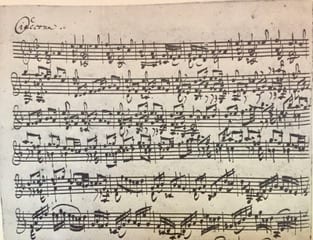Thoughts
The Maestro’s Thoughts on the Art of Violin Playing

About the Suzuki Method
I’m often asked if I teach using the Suzuki Method. What I tell students and parents is that I teach violin/viola using traditional methods, but I do include and use the Suzuki books in the lessons. Not only is the repertoire in the books very good, but the pieces are well thought out and really do allow the student to play pieces right away. The first 10 or so pieces in the first Suzuki violin book are on the A and E strings, so from a student’s perspective it’s not overwhelming. From my point of view, it’s easy to teach correct hand(s) and posture position while the student is concentrating on just those two strings. Motivation is key and the Suzuki Method books help the student move forward rapidly.” -Randy Cono
About Sight-Reading
It’s a subject that is often overlooked by music professionals, teachers and students alike. The ability to sight-read well is an incredibly valuable tool that makes playing new pieces a joy. Not to mention, sight-reading can be a tremendous amount of fun for you and your groups.
Rhythm is one of the most important parts of sight-reading. If you play wrong notes but the correct rhythm, you will still be in the correct place with your colleagues. However, if you play the correct notes but the wrong rhythm well…
A lot of starting and stopping.
Some Guidelines on Sight-Reading
1. Firstly, don’t beat yourself up! Sight-reading really is a lot of fun. Go slowly and enjoy the process. With a little bit of time and patience you’ll be playing through music you always wanted to play at first sight!
2. If possible, listen to the piece of music a few times before you start to play it; this will give you a real head start when you sit down and sight read it for the first time.
3. Concentrate on the rhythms and not just the pitches. It’s easier to concentrate on one aspect of the music, particularly when viewing it for the first time. Rhythm Rules in sight-reading!
4. Practice the rhythms slowly and with a metronome. One will find they have more time than they thought they had to execute the pitches at the same time.
5. Play easy pieces at first and at the right speed. What’s the right speed? Not so fast as to stumble and not so slow as to allow your mind to wander. So, start slowly and keep going even if you make pitch mistakes; this will help you develop your eyes for looking ahead. This is possibly the MOST important tool for sight reading.
6. Play difficult pieces in slow motion and DON’T STOP! Teach your fingers through the pattern(s). Over a very short period of time the same patterns keep coming up and become easier to play in all pieces.
7. And lastly, think of the metronome as your friend…..your own private little drummer, albeit kind of one dimensional but your friend none the less. Be nice to it, it’s trying to help you find your inner beat.
One last thought: The more you sight-read the easier and more enjoyable it is.
How to Practice and Achieve Goals
Seems like a silly question doesn’t it? However, prior to actually picking up your instrument and practicing…

1) Are you thinking about what you want to accomplish in your practice session?
2) Are your expectations too high or too low for where you are technically?
3) Are you being honest with how much time you have to put in to develop a proper technique?
Practicing does take a certain amount of time and dedication. But isn’t that always the case in something done well? Practicing can be fun if done correctly.
These and other questions can be answered through a good teacher. A good teacher can help expedite and achieve those dreams and realizations in a much shorter time than a student would on their own.